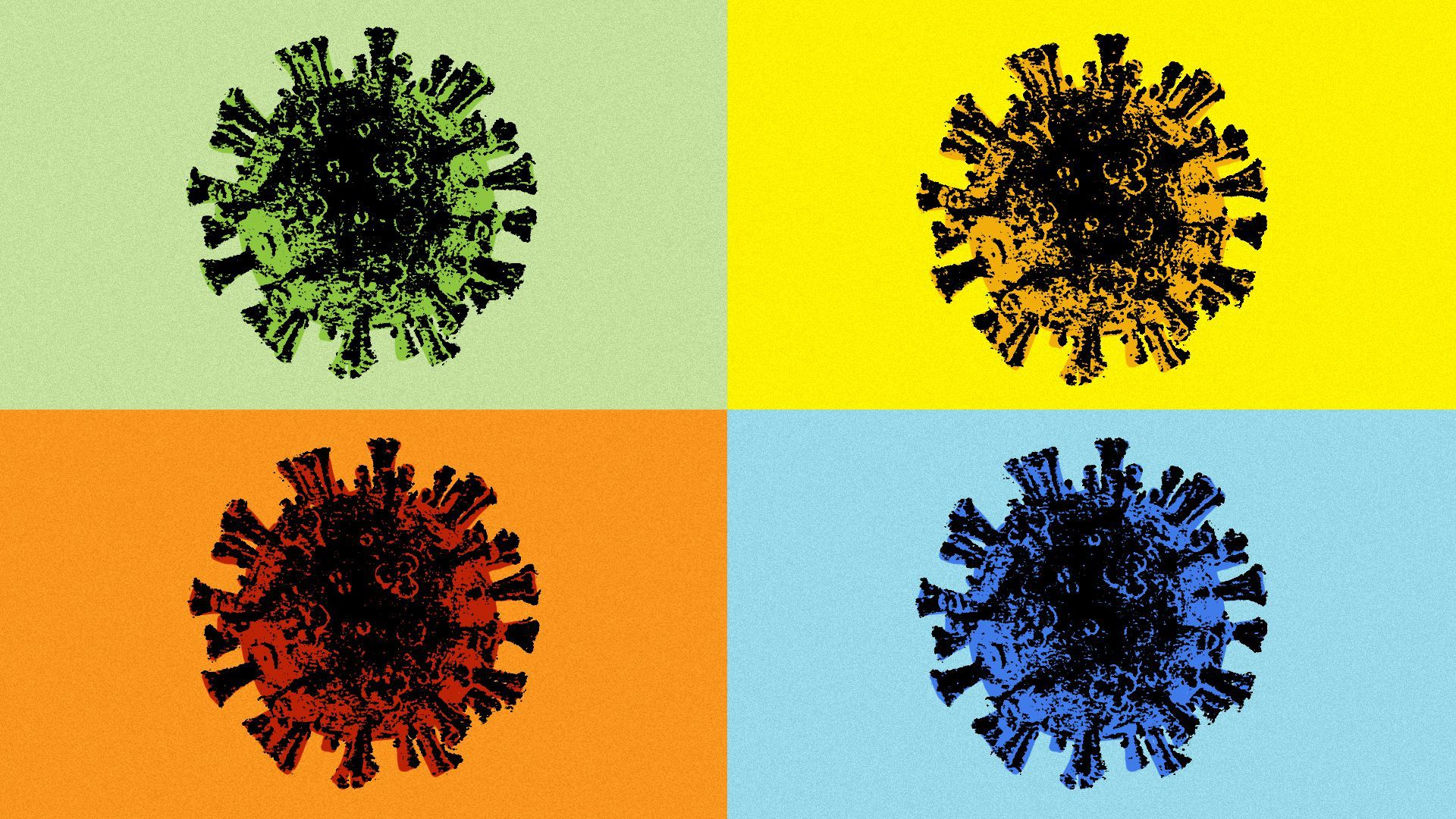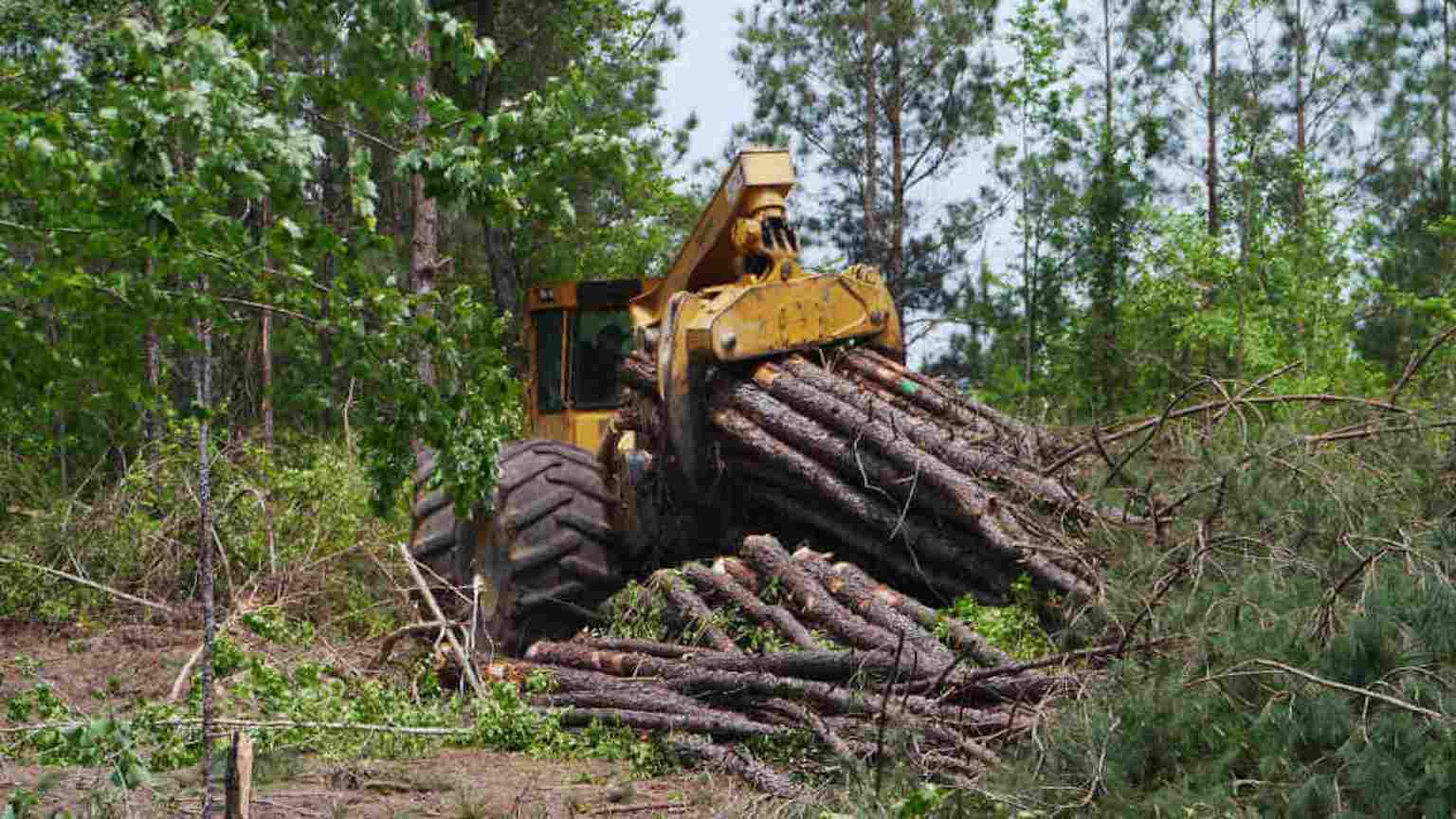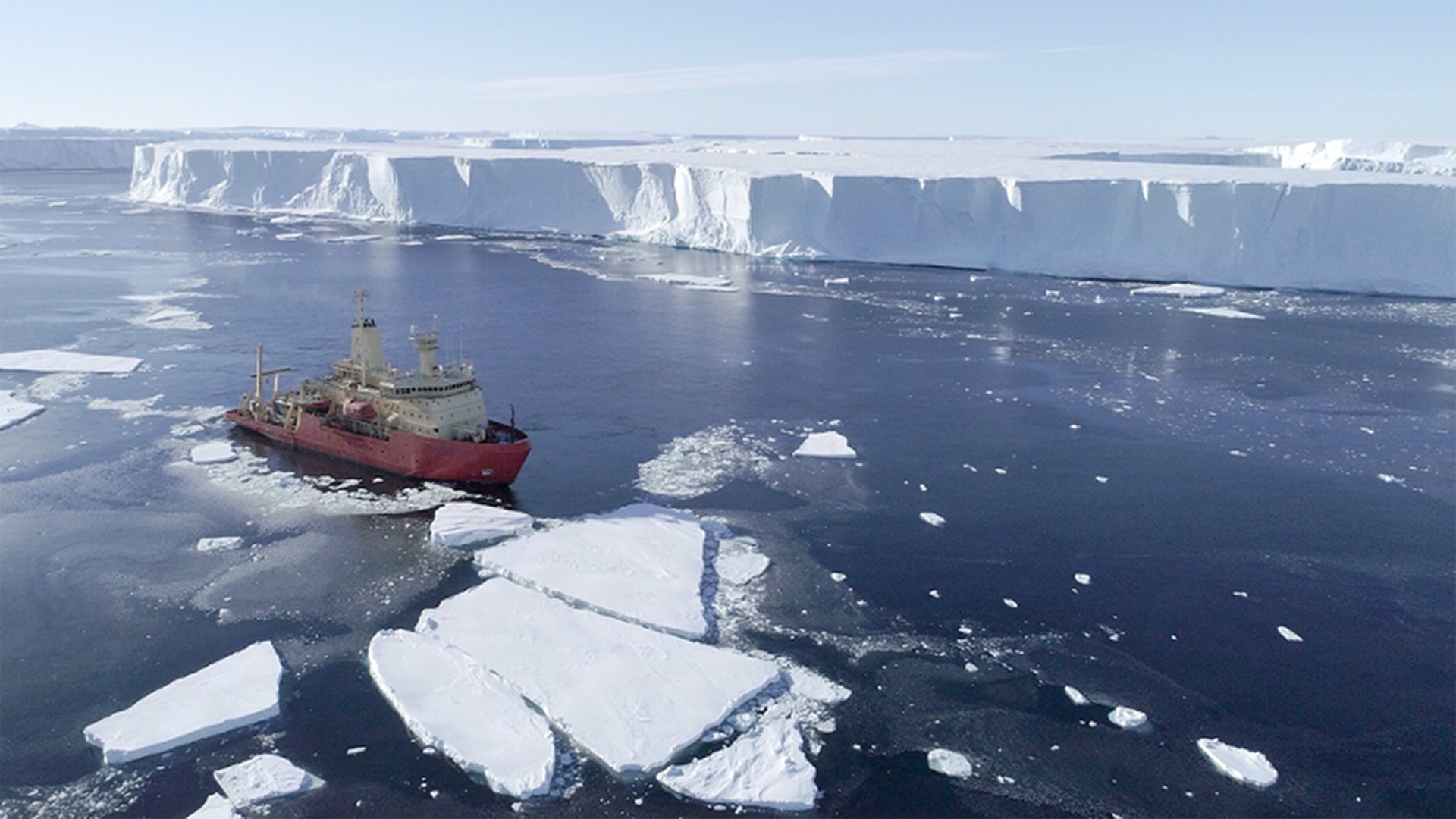| | | | | | | Presented By NRDC | | | | Axios Science | | By Alison Snyder ·Dec 16, 2021 | | Thanks for reading Axios Science. This week's newsletter is 1,377 words, a 5-minute read. - Send your feedback and ideas to me at alison@axios.com. You can reach Eileen Drage O'Reilly at eileen@axios.com.
- We'll be off the next few weeks. Wishing you a peaceful, restful and joyous end to the year. See you in January.
| | | | | | 1 big thing: The little-known defenders against COVID |  | | | Illustration: Aïda Amer/Axios | | | | The body's long-term immune responses help to defend against emerging coronavirus variants even as antibody immunity is waning in people who are vaccinated or who've had prior COVID-19 infections, Axios' Eileen Drage O'Reilly writes. The big picture: Variants are testing the success of the COVID-19 vaccines, as antibody levels typically drop after peaking from infection or vaccination. - The immune system generally uses neutralizing antibodies to fight against initial infection. Memory B cells, which have long-term protective capability, and T cells work to minimize the severity of disease.
- Prior infection or vaccination can trigger the body's range of responses.
Driving the news: "There's a considerable degree of immune evasion" by the newly arrived Omicron with its 50-plus mutations, NIAID Director Anthony Fauci tells Axios. Combined with the Delta variant, "it's very important" to get boosted when possible to reconstitute antibody levels. What's happening: The Delta variant is currently dominant and causing devastation in the U.S., but Omicron's mutations are concerning as they increase the virus' transmissibility and up its ability to escape immune protection from monoclonal antibodies, convalescent plasma and vaccine-induced antibodies, Fauci says. - While antibodies circulate in the blood and may not be at the right place at the right time, T cells can lodge themselves in mucosal and peripheral sites, where they are "armed and dangerous and ready to fight off this bug," says immunobiologist Jennifer Lund of Fred Hutchinson Cancer Research Center.
Omicron is not able to completely elude killer T cells in previously infected or vaccinated people, per early data not yet peer reviewed, says NIAID staff scientist Andrew Redd, currently in South Africa to study the coronavirus there. - "Omicron has led to a fourth wave here in South Africa. However, at least as of right now, that wave is behaving differently than the previous three waves," Redd tells Axios.
- Right now, South Africa is seeing an "explosive amount of cases" primarily from Omicron, but hospitalizations and deaths are lower than prior COVID waves there. "We don't know if this pattern will hold, but hopefully it will," he says, adding that the next few weeks will demonstrate how well herd immunity can halt Omicron in South Africa.
Between the lines: The focus of research on immune response from vaccines appears to have shifted toward the role of T cells as "another line of defense that might hold promise," says Lund, who c0-authored a recent study in Science Advances that compared immune responses from COVID to flu and RSV. - Harlan Robins, chief scientific officer at the company Adaptive Biotechnologies, says "as opposed to the flu, the T cell response [from SARS-CoV-2] sort of picked up the slack and is really providing strong protection, even in the case where we've lost the antibody response almost entirely."
Yes, but: Future variants could evade T cells primed by vaccines. - Vaccine makers should be required to measure T cell response to show if the vaccinated have long-lasting robust protection even when the virus changes, says Robins, whose company has FDA's emergency use authorization for its T-Detect COVID test.
What to watch: Lund is urging development of a nasal vaccine for SARS-CoV-2, to "induce more antibodies in the nasal passages, where the virus first comes into contact with the host, and improve protection." |     | | | | | | 2. Catch up quick on COVID-19 |  Data: N.Y. Times; Cartogram: Kavya Beheraj/Axios COVID cases are rising in the U.S. with Christmas — and the Omicron variant — around the corner, Axios' Sam Baker and Kavya Beheraj write. Two doses of China's Sinovac vaccine — used widely in China and around the world — don't adequately protect against the Omicron variant in small, lab studies of the antibody response from the vaccine, Jinshan Hong at Bloomberg reports. - "[T]he prospect of having to accelerate booster campaigns or even re-vaccinate with a more omicron-specific shot will set back the world's efforts to exit the pandemic."
- The latest on other vaccines and Omicron from Jef Akst at The Scientist.
Pfizer's antiviral COVID pill can reduce the risk of hospitalization and death by 88% when given within five days of symptoms beginning, the company said this week. - The drug also inhibited a protein in Omicron in lab experiments, suggesting it will be effective against the variant.
|     | | | | | | 3. A private science mission to Venus |  | | | A filtered image of Venus as seen by NASA's Galileo spacecraft. Photo: NASA/JPL | | | | A privately funded mission to Venus expected to launch in 2023 could kick off a series of launches that could help reveal whether Earth's "evil twin" once hosted — or still hosts — life, Axios' Miriam Kramer writes. Why it matters: A controversial study published in 2020 suggests there might be phosphine — a possible sign of microbial life — in the clouds of Venus, bolstering the case to return to the world. - Right now, space missions are primarily funded by government agencies like NASA. Privately funded interplanetary missions could fundamentally change how science is done, opening the door to new avenues of exploration.
Details: The mission, which is being planned by scientists from MIT, Georgia Tech, Purdue University, Caltech and the Planetary Science Institute, will make use of a probe sent to space by a Rocket Lab spacecraft. - A new report from the team explains the probe will come equipped with a laser designed to help it figure out what kind of chemistry is happening in droplets in Venus' atmosphere during a three-minute flight through the planet's clouds.
- "Fluorescence or impurities detected in the droplets could indicate something more interesting than sulfuric acid might be wafting around up there, and add ammunition to the idea that parts of Venus' atmosphere might be habitable," MIT wrote in a news release.
- That mission is expected to launch in 2023, with another, larger mission into Venus' atmosphere being planned for 2026 that will build on the results of this one.
- The 2026 mission could then lead to another that will actually bring a sample of the world's atmosphere back to Earth.
The big picture: NASA is also setting its sights on Venus. The space agency recently greenlighted two major missions to the cloudy, hot planet to learn more about its potential for past and even current life. Sign up for Miriam's weekly Axios Space newsletter here. |     | | | | | | A message from NRDC | | Biomass hardly lives up to its carbon-cutting reputation | | |  | | | | For years, scientists warned that burning trees to produce electricity worsens climate change, much like coal and other fossil fuels. Tell Senator Jeanne Shaheen: Burning trees in power plants is not carbon neutral. Learn more. Photo: U.S. Forest Service. | | | | | | 4. Worthy of your time |  | | | A ship passes Thwaites Glacier. Photo: Aleks Mazur/International Thwaites Glacier Collaboration | | | | Antarctica's Thwaites Glacier ice shelf could collapse within five years (Carolyn Gramling — Science News) Explainer: The trial of Harvard chemist begins (Andrew Silver — Nature) Winter without snow is coming (Sarah Sax — High Country News) Earth's magnetic field illuminates Biblical history (The Economist) |     | | | | | | 5. Something wondrous |  | | | Coronal streamers. Credit: NASA/Johns Hopkins APL/Naval Research Laboratory | | | | Streamers of solar plasma flew past a NASA spacecraft as it dove into the Sun's outer atmosphere earlier this year in a historic scientific moment. Why it matters: It's the first time a spacecraft "touched" the Sun, as NASA puts it, and a key step in a mission to shine light (oof, a pun. I'm sorry) on the origins of the solar wind that can disrupt life on Earth. - The probe gave scientists their first close-up images of coronal streamers. (The streamers are the bright streaks at the top of the image above.)
The details: The Parker Solar Probe, which launched in 2018, passed in and out of the Sun's corona in April of this year, researchers announced this week at the annual meeting of the American Geophysical Union, after analyzing data from the probe. - A key boundary in the Sun is the Alfvén point where the solar atmosphere of gas and plasma bound to the star by gravity and magnetic forces begins to stream out as the solar wind.
- On April 28, 2021, during its eighth flyby of the Sun, the probe "crossed the Alfvén critical surface for the first time and finally entered the solar atmosphere," according to a press release.
- The event happened about 8 million miles above the photosphere or visible surface of the Sun, marking the Alfvén point with direct data for the first time.
The big picture: Determining how and where the solar wind's components emerge "could help scientists answer a long-standing solar mystery: how the corona is heated to millions of degrees, far hotter than the solar surface below," per the press release. What to watch: The probe's next flyby will be in January, and in coming years it will pass less than 4 million miles above the Sun's photosphere. |     | | | | | | A message from NRDC | | Burning trees for electricity is not a sustainable business model | | |  | | | | Biomass hardly lives up to its carbon-cutting reputation. With promises of jobs and lies about carbon neutrality, we see over and over that the biomass industry is failing to deliver on false promises, leaving communities in worse shape. Learn why the handouts to biomass companies must stop now. | | | | Thanks to Annelise Capossela for this week's illustration and to Amy Stern for copy editing the newsletter. Sign up here to receive Axios Science in your inbox. |  | Bring the strength of Smart Brevity® to your team — more effective communications, powered by Axios HQ. | | | | | | Axios thanks our partners for supporting our newsletters. If you're interested in advertising, learn more here.
Sponsorship has no influence on editorial content. Axios, 3100 Clarendon Blvd, Suite 1300, Arlington VA 22201 | | | You received this email because you signed up for newsletters from Axios.
Change your preferences or unsubscribe here. | | | Was this email forwarded to you?
Sign up now to get Axios in your inbox. | | | | Follow Axios on social media:    | | | | | |










No comments:
Post a Comment